Interview by Travis Starnes
I had the opportunity to connect with Ellen Larson and ask her son questions about her book In Retrospect. I have to say I was a fan of hers just from reading this book but I am more so now that I have had a chance to talk to her. She clearly loves to write and has a passion for her material that is heartening to see. She mentioned after answering my questions that one of the reasons for writing a time travel story was the challenge of making the readers head explode from the “ah-ha” moment. How can you not like a writer has that as a goal.
She also sent a brief background of the world she created for In Retrospect. I have included that at the bottom of the interview. You can find the full text along with other information about the series www.inretrospectbook.com/backstory.html.
This books seems to straddle a lot of genres. Do you consider it sci-fi or mystery or time travel or some unique conglomeration of all the above?
 The simple answer is, “some unique conglomerate of the above.” The real answer is, I fear, unsatisfying. The fact is that I don’t consider genre when I write. I feel free to use any time, any place, any character, any theme, and any structure I like to tell a story. I honestly believe that genres are for booksellers and possibly reviewers. Obviously I knew I was writing a fairly conventional mystery (sleuth, clues, suspects, deduction, solution), and the fact that Five Star, a mystery publisher, eventually bought the book is a testament to my success in that endeavor, but I felt no pressure to write a beach mystery, or a cozy, or a police procedural. But I don’t think “mystery” is enough. Depending on my mood, I’ve called it a science-fiction murder mystery (I use this the most, because it is most informative to potential readers), dystopian mystery (this is what Five Star calls it), post-apocalyptic, woman sleuth, and psychological mystery. I think it is significant that you can call all of my mysteries “psychological mysteries.” One final note: In Retrospect is also what is called “literary fiction,” but that (no matter what you hear) is not a genre, but rather an approach to writing.
The simple answer is, “some unique conglomerate of the above.” The real answer is, I fear, unsatisfying. The fact is that I don’t consider genre when I write. I feel free to use any time, any place, any character, any theme, and any structure I like to tell a story. I honestly believe that genres are for booksellers and possibly reviewers. Obviously I knew I was writing a fairly conventional mystery (sleuth, clues, suspects, deduction, solution), and the fact that Five Star, a mystery publisher, eventually bought the book is a testament to my success in that endeavor, but I felt no pressure to write a beach mystery, or a cozy, or a police procedural. But I don’t think “mystery” is enough. Depending on my mood, I’ve called it a science-fiction murder mystery (I use this the most, because it is most informative to potential readers), dystopian mystery (this is what Five Star calls it), post-apocalyptic, woman sleuth, and psychological mystery. I think it is significant that you can call all of my mysteries “psychological mysteries.” One final note: In Retrospect is also what is called “literary fiction,” but that (no matter what you hear) is not a genre, but rather an approach to writing.
The far history of the world, prior to the conflict between the Oku and the Rasakans, was only hinted at, but seemed very interesting. How detailed did you get in coming up with that history? Was it a purposeful decision to just hint at what happened to current day civilizations, rather then laying it all out?
It was intentional. But not because I thought that the detail about the Annihilation or the subsequent struggle of Earth’s citizens to survive was irrelevant. I just had no room to squeeze it in. As I wrote In Retrospect I was constantly worried about overwhelming readers with information. First came the need to explain the rules of my time travel theory, which are annoying complicated (but fun). In many ways, the key question of the book is not “Who killed Omari Zane?” but rather “Can you change past history or not?” I spent a tremendous amount of energy and countless revisions doing my best to make sure readers would be able to keep up with this wholly imaginary philosophical and practical debate. No less important was the need to make the conflict between the Oku and the Rasakans realistic. But it was important that neither of these imperatives smothered either the mystery plot or Merit’s journey, which are the emotional centers of the book. Oh yeah, and then there was the trick of keeping the non-linear storyline flowing smoothly, so that the reader has the sense that information and events are presented in the correct order. The back story exists (and I intend to tell part of it), but there came a day when I said, “This jar is full, if I put any more pennies into it, they’ll just slide off.”
 The time travel in this book is different then I have seen elsewhere. How did you go about coming up with the way it worked?
The time travel in this book is different then I have seen elsewhere. How did you go about coming up with the way it worked?
Choosing a time travel theory was great fun. It won’t surprise anyone to hear that I’ve read a log of time travel stories and seen many more on TV and in the movies. I’m a big Star Trek fan, and the time travel stuff was always my favorite. So when I decided I wanted to write a big-fat twist-ending time travel story, I did quite a bit of research. Early on in the process, I ran across the theory I eventually ended up using, wherein scientist theorized that they build an appliance (which eventually became the Artifice) that could capture time as it flowed by (the Continuum), record it, and keep it available to go back to in some fashion that in no way included humans actually visiting previous time frames. What appealed to me about this was that the science was based on actual theory, rather than any kind of “wave your hand” fantasy. I was also attracted to the idea that in this system it was only possible to go backward in time, never forward. Because in terms of the mystery, I was looking for restrictions that I could play with. Which explains why I don’t allow anything made of metal to travel in time, and why not just everyone can be a time traveler. Most of my rules for time travel, particularly what the Vessel could and could not do, were created to serve the needs of the story. It may be interesting to readers to know that I didn’t originally intend to have quite as many rules and restrictions as I ended up having; some developed and were find-tuned when I became enchanted with the “Can you change history?” issue, which appeared when I realized I wanted to have Merit try very hard to change history—despite her belief that it couldn’t be done.
The “a-hah” moment at the end of the book reminds me of other stuff I have seen/read, where once everything is revealed the reader is able to go back through what has happened in the book and see how the pieces really fit together. Was there any inspiration for you for this type of ending? How much outlining and plotting did it take to keep all the pieces together so it all works when reading it the first time and reading it once you know the whole story?
I often tell people who have read the book that I based the structure on the movie The Sixth Sense. That’s true in terms of the “ah-ha” moment (and oh how I wish Merit’s moment of understanding could be done with mental images as it is done in that movie—it was much, much harder to do it in words). But other than that there’s not much resemblance, I admit. And if you’ve read the book a second time, you know that I spent a heck of a lot of energy making sure that the second read-through would be a fun read. It scared me a lot as I was writing, because when you know the ending, you’re constantly thinking “Oh Lord, this is too obvious!” But during late revisions, I realized it just wasn’t obvious at all, so I put in a lot of fun stuff. This is what I call being fair to the reader; everything is up front and in plain sight. That’s my kind of mystery. It’s not a question of outlining; it’s a question of writing on more than one level. I’m a re-reader by nature, and it’s actually painful for me to contemplate writing a book—particularly a mystery—that would only ask to be read once.
Going hand in hand with the effort in plotting out the reveal, how was it using a lot of flashbacks to tell a story? I have read other books that used this technique and the quality varies wildly. I thought you pulled it off very well, but was it hard to keep straight when writing. Especially since the flashbacks weren’t all to the same period of time?
Thank you. Actually it was easy to keep the different story lines straight, because that’s how my mind works. Structure is my thing, so I’m actually taking advantage of what I’m good at. There are three story arcs that are told via flashback: Merit’s days at the Prospectives School and her history with the Old Prioress; the love story with Eric (only two flashback scenes, because the continuation of this arc takes place during the “now” time of the book); and Merit’s experiences with the militia and the Resistance. During one period of revision, I tried to make all of the flashbacks chronological, but it didn’t work, so I just kept them chronological within the individual arcs. It was seriously fun to have those three little arcs embedded in the main story; I think they give the tale tremendous freshness and surprise. I’ll never do it again, because this structure breaks one of my basic rules of writing, which is not to depend on the revelation of information the protagonist already knows for drama. But in the end, only one or two of the flashback scenes (notably the torture scene after Merit is captured) are there just to inform the reader of what has happened; the rest are there because Merit is remembering her life (cf. the title of the book!) and seeing it in a different light based on what is happening in the “now” time.
So, what is with the Shields? They are referenced so much but I never got why everyone was wearing shields.
Yeah, apparently in my desire to make the back story as brief as humanly possible, I didn’t explain this with enough detail. No, it’s not just you—I’ve had several readers complain about this. Here’s the relevant text that survived my cutting (note the example of the nervous author literally cutting the sentence in half to keep it as brief as possible). It’s in the second Eric flashback, when he is trying to tell her that trouble is brewing:
Merit says: “Half the people in Oku City wear shields symbolic of their social status. Elected officials, respected seniors, youngsters trying to look sophisticated. It’s an important tradition. Everyone in what was left of Balkan Europe after the Annihilation had to wear a shield for a hundred years as protection from the radia—”
Someday I will revise the book, and add something clearer. In the mean time, check the “In Retrospect Backstory” essay (below) that I wrote in the wake of publication to explain such questions.
They world is so impressively fleshed out and intricate, are you planning on doing anything else with it. Either sequels or prequels?
You have no idea how heartwarming it is to hear you say that the world is fleshed out. Because both Kirkus Reviews and a well-known science fiction blogger complained that it was not. That surprised me, because seriously, I spent a whole lot of effort to make my worldbuilding unique, internally consistent, and interesting. I suspect that the problem was that they didn’t share your opinion that it was best to leave the Annihilation undefined. Anyway, to answer your question, there is at least on sequel/prequel in the works (as we speak!). It is called Upon Reflexion, which has got to be the best sequel title EVER. It will share a lot of the storytelling characteristics with In Retrospect, including the non-linear story—but no flashbacks this time. Indeed the fun of it is that the time traveling protagonist is stuck in the Continuum, and caroms out in various time-frames in no particular order, let alone chronological. So in this book, the story is told from the time traveler’s point of view, with all her experiences in their proper order—except that she is bouncing all over the place, completely out of order. The possibilities are endless!
In Retrospect Back Story
Imagine that in about the year 2450, nuclear war erupts on our Earth, a war that was is destructive that North America is ripped open from its mountains to its plains, that the seas rise in fury and flood China, lowland Africa and India, and that the Earth itself is tipped off its axis so that the greater part of its once fertile zones are turned to cracked desert. Following this Annihilation, it takes hundreds of years for the new ecosystem to stabilize, for the toxicity from the poisonous and radiation to die back to tolerable levels, and for the small pockets of life that remain to begin to expand again.
Around 2900, humans from various points of the compass gather on what was once known as the Anatolian Peninsula, which, thanks to the shifts of latitude and weather, has become one of the few truly welcoming regions left on Earth. These humans, coming out of Africa and Russia, blend their cultures quickly, developing a lingua franca and calling themselves the Oku (the Peaceful) and their city-state, Okucha (Land of Peace). They alone among Earth’s survivors have preserved the treasures of humanity from before the Annihilation: mathematics, science, medicine, history.
The Oku commit themselves to recreate the best of human society. For many years they wear protection against the remaining radiation, including face shields. When, around 3100, the need for such protection is deemed insignificant, they continue to wear their shields as both the symbols of identity they have become, and to remember their past. Aware of how close humanity has come to being snuffed out entirely, they forge such lessons into every aspect of their society, so that such a monstrous thing will never happen again.
About the year 3200, humans from what had been northern Europe make their way over the New Mountains in search of a new, more temperate, homeland, willing to fight for what they want. Unlike early waves of incomers, these folk, who call themselves Rasakans, are illiterate, and preserve Earth’s past history only as myth and story. But despite their marauding traditions, they are no match for the technological superiority of the Oku. The Oku, committed to a peaceful Earth, allow the Rasakans to settle on the fertile lands north of the Bosporus, though they impose conditions, which include disarmament and the presence of Oku administrators as well as organizational and travel restrictions. In return, the Oku set about educating the Rasakans, with the goal of eventually re-uniting as one people.
The Oku Science Conservatory, which has steadily been developing pre-Annihilation technologies for re-introduction into Oku culture, successfully fabricates the Artifice, the jewel of Old Earth science, kindling it on March 29, 3212. The Artifice creates a time Continuum, which allows non-metallic objects and certain humans to travel through time back to any time after the date of the kindling. They build a handful of Vessels and begin to attune Retrospectors, who must undergo ten years of biological modifications to travel in time. In accordance with Oku tradition, they are careful to use the flex technology, as it is called, for principled reasons: historical research and forensics only. They fiercely guard the flex technology, for they know its power if misused. Eventually a second Artifice, operated by the Civil Protection Force, is kindled, providing two ways to enter the Continuum.
In the year 3317, following some thirty years of discontent and secret weapons manufacture, the Rasakans invade Okucha, destroying the Conservatory and half of Oku City in the first year of this new war. Though Oku losses are heavy, the balance of military might is leaning their way when, in 3322, the great Oku General Omari Zane inexplicably surrenders to the Rasakans. The Rasakans occupy Oku City, though as they flee, the Oku disable the CPF Artifice. That is the situation when Zane is himself killed, and Merit Rafi, the last Retrospector left alive, captured and forded to work for the new Joint Protection Force by Rasakan Authority, is dragged into the limelight to investigate the murder. And so the story begins.





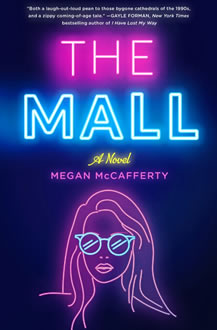
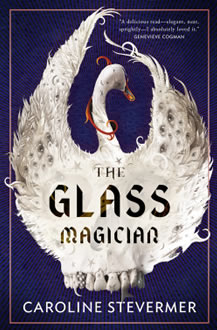

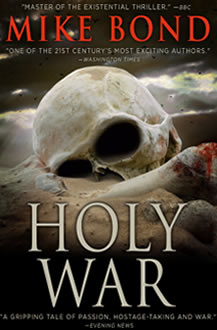
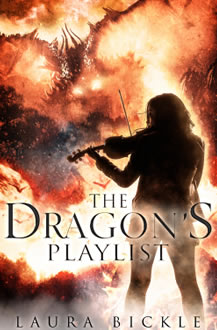


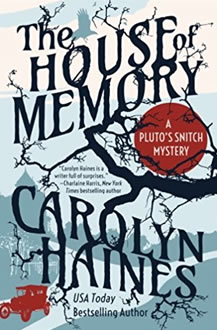
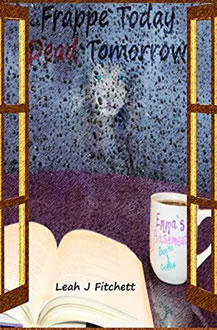
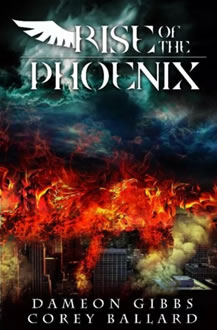
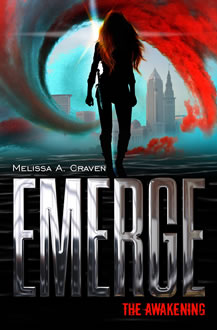
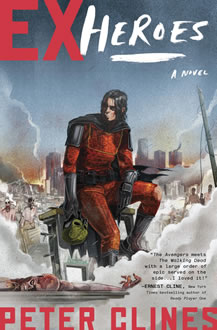
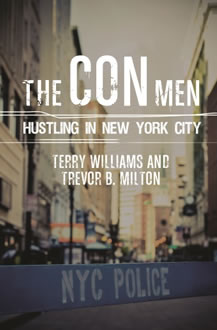
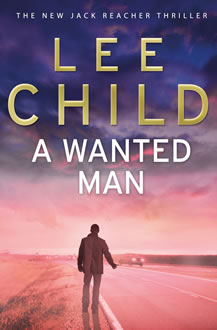
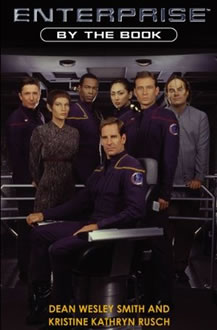
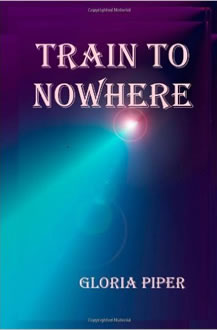




Leave a Reply